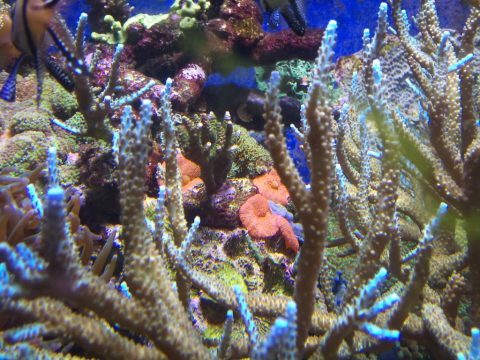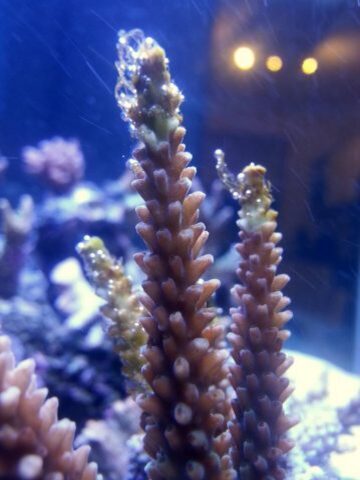One of the number one challenges faced by new reef keepers is trying to determine how much alkalinity is best to keep their coral healthy and growing.
Soft corals such as Zoanthids and leathers, and long polyp stony corals such as Favia and Lobophyllia can be pretty forgiving when it comes to alkalinity levels.
But Acropora and most other short polyp stony corals are another story…
They require a very stable, consistent level of alkalinity – which brings about one of the BIG questions new reef keepers (like me) often ask…
What is the best alkalinity level for growing coral?
The most common and ‘correct’ answer is: it depends on the lighting and nutrient levels in your tank.
For quite some time now I’ve struggled to figure out just what exactly that meant. Does it mean more light and zero nutrients? Less light and more nutrients?
It gave me no understanding of light, phosphates, and nitrates related to finding the best alkalinity level for keeping my coral healthy and growing.
Then I saw this information in a post on my local forum and I knew I had to share it.
Once I read it, everything finally started to make sense.
This information is courtesy of the members of the Washington Area Marine Aquarists Society.
1. Keeping your alkalinity STABLE is crucial
The most important part of keeping Acropora and other SPS coral is ensuring your alkalinity remains consistent.
As long as your alkalinity remains stable at one set value somewhere between 6 and 11 dKH your coral will be fine.
If it bounces up and down a lot within that range though, the constant change will shock your coral and eventually weaken or kill it.
Now, let’s figure out what value in between 6 – 11 dkH would be a good starting point for determining the best alkalinity level for your tank.
2. There is a correlation between alkalinity, light, and nutrients.
Most corals – particularly Acropora and SPS corals – contain photosynthetic algae, called zooxanthellae. It acts as a sunscreen and is what gives them their color.
Phosphates and nitrates – aka ‘nutrients’ – act as food for the zooxanthellae. Too much food will mean too much zooxanthellae or ‘sunscreen’. Not enough food will mean not enough zooxanthellae or sunscreen.
So, if you have your ALK in the 6 and 7 range, your nitrates and phosphates need to be low so you don’t stunt growth.
Less than 0.03 ppm phosphates and 5 ppm nitrates would be a good place to start. Then, if needed you can slowly lower them even more.
On the other hand, if you keep your alk in the 11-12 range, you need to keep your nitrates and phosphates much higher so the zooxanthellae can keep up and protect the Acropora.
A lot of time you see across “Burnt tips”. This occurs because the zooxanthellae algae can’t keep up with the coral growth. Eventually, if the zooxanthellae get further and further away from the tips, they will die halting growth.
Here is an example of alkalinity at a level that is right on the edge of being too high in relation to nutrient levels:

And this is what happens when it is too high – burnt tips.

3. Zero in on the best alkalinity level for your tank
With that in mind, you can now zero in on the best alkalinity and nutrient levels for your tank.
Let’s say your nutrient levels are high – for example, your phosphate is ~0.15 dKH and your nitrates are ~15 ppm. If your alkalinity is below 9 dKH, you may want very slowly raise it until you see the kind of coral growth and coloration you like most.
OR, you can gradually lower your nutrient levels until they are more in balance with your current alkalinity level.
Likewise, if your nutrient levels are low – say your phosphate is below 0.03 ppm and your nitrates are less than 5 ppm, you can lower your alk… OR you can raise your nutrients.
Either way, the key is to make the changes slowly. And, once you find the alkalinity level that gives you the coral growth and color you desire, make sure it remains as stable as possible.
In the end, every aquarium is unique and you will have to find the right level for your tank with the best alkalinity test kit available.
But this information is a great place to start.



